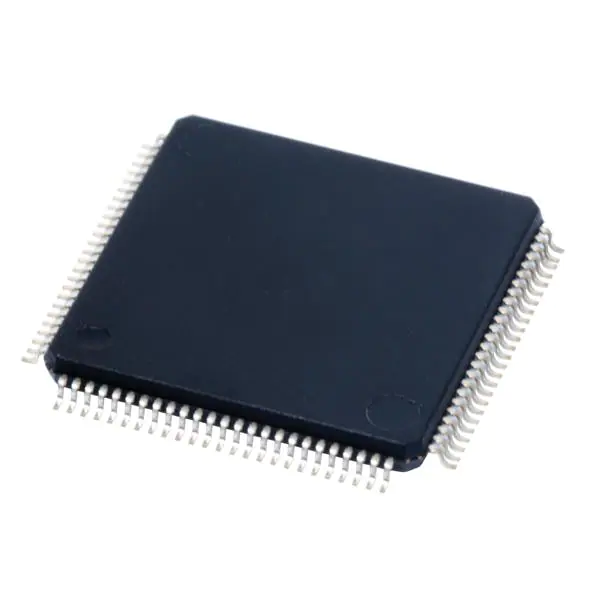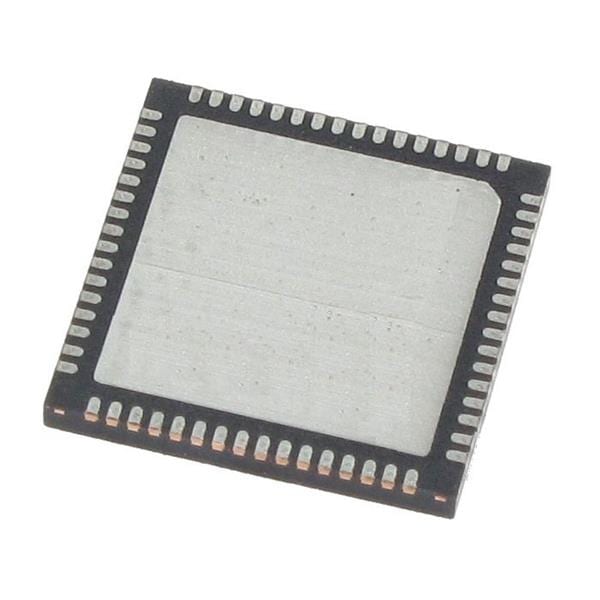Gary Boone, who worked in the Texas Instruments (TI) MOS Department, devised the first chip that can be called a microcontroller because he was becoming bored with his job and in trouble with his family. He’d joined TI in 1969 just when calculator chips were getting to be big business. During the 1960s, electronic calculators replaced the electromechanical Marchant and Frieden calculators that had owned the market for decades. Semiconductors made it possible to replace the hundreds of intricate metal and plastic parts in these electromechanical calculators, first with hundreds of transistors and diodes, and then with fewer and fewer integrated circuits. North American Rockwell Microelectronics, Mostek, General Instruments, and Texas Instruments were early players in the multi-chip calculator market.
At first, a few dozen integrated circuits were needed to replace hundreds of transistors and diodes. As integrated circuits incorporated more components, it took fewer and fewer ICs to build a working calculator. By 1968, IC-based calculator designs had largely supplanted transistor-based designs. The endpoint was obvious. Eventually, semiconductor manufacturers would reduce the electronic guts of a calculator to a single chip. STM32F429IIT6

Japanese calculator vendors Sharp, Canon, and Busicom connected with various US semiconductor vendors to develop custom chips for their calculators. Sharp partnered with Rockwell, Canon partnered with TI, and Busicom partnered with Mostek and Intel for different calculator models. Busicom asked Mostek to develop a one-chip calculator and contracted with Intel to develop a custom chip set for a more complex, programmable calculator. Mostek reached the goal first in late 1970 with the MK6010, a single custom chip that replaced 22 integrated circuits. Busicom incorporated this chip into its Busicom Junior, a small 4-function desk calculator. The contract with Intel eventually led to the development of the Intel 4004 microprocessor. However, this story is about microcontrollers, which took a related but different evolutionary path.
TI’s MOS Department was deeply into the thick of things regarding calculator chip sets. Calculator companies including Canon, Olivetti, and Olympia asked TI to develop 4-, 5-, and 6-chip sets for their calculators. Executing these custom chip projects fell on the shoulders of a few TI engineers including Gary Boone. The job entailed flying all over the world, to Japan, Italy, and Germany. Boone spent a lot of time on the road and his family resented his absence. Boone quickly became bored with the intense travel just to develop a new chip set that looked a lot like the previous one. Many prospective clients wanted calculator chips in those days, but each client wanted something just a little different. That’s the nature of the custom chip business. It’s a customer-intensive business.
Boone’s frustration and family matters drove him to seek out Daniel Baudouin, TI’s MOS Marketing manager. Together, they compiled a matrix of customer requirements derived from conversations with various calculator makers. Then they added a collection of functional blocks that could satisfy these requirements. Boone and Baudouin were also mindful of what the current TI MOS process technology could accomplish, and what it could do best. Their thinking quickly veered towards architectures that made heavy use of memory – RAM and ROM – because these structures are extremely efficient and easier to route on an IC. Memories promised better silicon utilization efficiency by a factor of 40x or 50x.
Once Boone and Baudouin started thinking about using memory, they started to consider how much data and program storage a calculator chip needed. At that point, the TI team started to discuss the prospect of a ROM-programmable, single-chip calculator with prospective customers. They got a lot of pushback. Customers accustomed to the idea of funding their own calculator chips balked at the idea of calculator chips that were differentiated only by some bits in an on-chip ROM. There was internal pushback within TI as well, because a programmable, ROM-based part was contrary to what the company was accustomed to manufacturing.
At this point in the story, you may find all this discussion of calculator chips at odds with the headline. This article series is clearly supposed to be about the history of microcontrollers. Let me assure you, we’re not off track. The first microcontrollers – devices designed by Boone and TI engineer Michael Cochran that included a processor, memory (RAM and ROM), and I/O all on one piece of silicon – were calculator chips, and they were the first microcontrollers. Look at the figure below, taken from US Patent 4,074,351:
Image credit: US Patent and Trademark Office
This figure shows the block diagram of the first TI single-chip calculator, the TMS1802NC. It shows all the critical components of a microcontroller. It has a CPU consisting of a program counter (PC), an instruction register (IR), an instruction decoder (Control Decoders), and a 4-bit ALU. It has a RAM to store numeric data and a ROM to store a program that defines the chip’s operation. Finally, at the bottom, you can see specialized I/O circuits for scanning a matrix keyboard, driving display digits, and driving the seven segments in each display digit. The I/O in this design may be specialized, but this diagram clearly depicts a microcontroller.
TI announced the TMS1802NC single-chip calculator IC on September 17, 1971. That’s two months before Intel announced the 4004 microprocessor. TI priced the device at less than $20 in volume. The ROM held 320 11-bit instruction words (3,520 bits) and the serially accessed, 182-bit RAM held three 13-digit BCD (binary-coded decimal) numbers and 13 binary flags. In all, the chip required about 5000 transistors.
(Note: While researching this article, I found more than one Website that confused TI’s TMS1802NC 4-bit calculator chip with the 8-bit RCA CDP1802 COSMAC CMOS microprocessor, announced in 1974. The TI and RCA chips are not the same part, despite the similar part numbers.)
TI’s press release from September 17, 1971 further confirms the TMS1802NC’s status as a microcontroller:
“Any number of special operational characteristics can be easily implemented by TI using single-level mask programming techniques of the same basic or host design. The only limitations are the size of the program ROM, the RAM storage, and the control, timing, and output decoders. For example, by reprogramming the output decoders, the TMS1802 can be used to drive decimal displays such as Nixie type tubes.”
One of the first calculators to use the TI TMS1802 calculator chip was the Sinclair Executive.
The Sinclair Executive, a very early pocket calculator, incorporated the TMS1802 single-chip calculator. Image credit: MaltaGC, Wikimedia Commons
TI announced the TMS0100 single-chip calculator family on September 20, 1972, almost exactly one year after announcing the TMS1802C. The company rebranded the TMS1802NC as the first TMS0100 family member, the TMS0102. Eventually, there would be more than 15 different members in this family, made with TI’s 10-micron PMOS process technology. A year later Mostek released its improved, pin-compatible copy of the TMS0102 called the MK5020. Like all the semiconductor makers listed at the beginning of this article, both TI and Mostek would soon announce microcontrollers, developed in part with knowledge gained from the creation of these early calculator chips.
Meanwhile, Boone was already thinking out of the calculator box for this device. Calculator chip patent 4,074,351 described additional target applications including taxi meters, digital voltmeters, event counters, automobile odometers, and measuring scales. Of course, microcontrollers have been used in all these applications, and far more, as will be discussed in future articles in this series.
Gary Boone, an oral history conducted in 1996 by David Morton, IEEE History Center, Piscataway, NJ, USA
The Story of the Race to Develop the Pocket Electronic Calculator, Vintage Calculators Web Museum
Texas Instruments TMS0100 Family, Datamath Calculator Museum
State of the Art: A Photographic History of the Integrated Circuit, Stan Augarten, Houghton Mifflin, 1983
Steve, You’ve done a terrific job of documenting a very obscure history of the calculator chip evolution. I’m looking forward to the rest of the series. Wally
Thanks Wally. I really enjoyed writing this 9-part series. I hope you like it.
Hi Steve — this is awesome — I was aware that the first commercial microprocessor (the Intel 4004) came about as part of a calculator project, but I had no idea that the first commercial microcontroller started out the same way — I can’t wait to read Part 2!
You must be logged in to post a comment.
Learn about Synopsys' collaboration with DARPA and other partners to develop a one-of-a-kind, high-performance AMS silicon verification capability. Please watch the video interview or read it online.
TI’s SHP space-qualification level provides higher thermal efficiency, a smaller footprint and increased bandwidth compared to traditional ceramic packaging. The common package and pinout between the industrial- and space-grade versions enable you to get the newest technologies into your space hardware designs as soon as the commercial-grade device is sampling, because all prototyping work on the commercial product translates directly to a drop-in space-qualified SHP product.
Sponsored by Mouser Electronics and CUI Inc.
Did you know that the global home medical equipment market is projected to reach over fifty-five billion dollars by 2030? In this episode of Chalk Talk, Bruce Rose from CUI Inc and Amelia Dalton explore the various safety certifications and regulations needed for home health care designs. They also examine the roles that temperature, isolation, and leakage current play in home health care power conversion and the additional requirements needed for power supplies for home health care applications.

STM32F103ZET6 Click here for more information about CUI Inc SDM300G-U & SDM300G-UR GaN Adapters